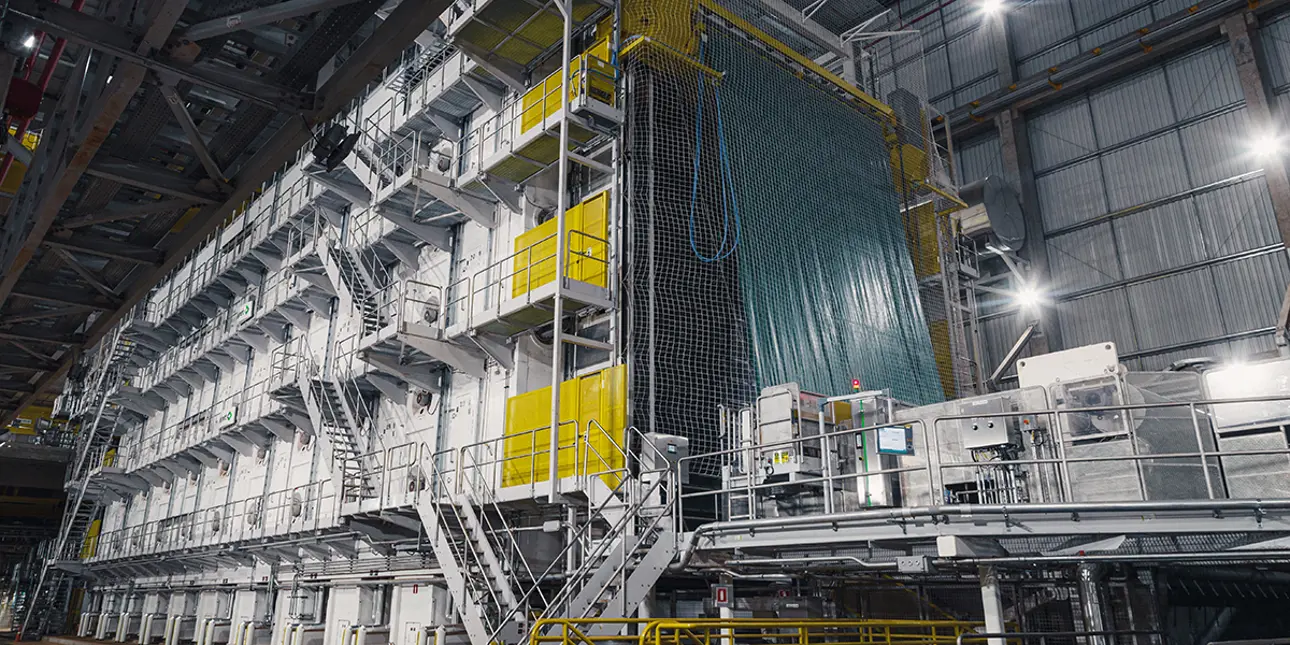One new milestone with textile pulp at LD Celulose mill
LD Celulose’s pulp drying machine ran for over 270 days without any web breaks. This achievement marks a new milestone in 2023 for textile pulp. Since its start-up, the machine has demonstrated a very stable runnability.

Gabriel Minighini, Process Engineer at Valmet, identified three main factors contributing to this excellent performance: "The choice of the right machine design to handle the unique properties of the dissolving pulp, the high quality of works and commitment during engineering, commissioning and startup phases, and the expertise of the LDC professionals heading the pulp drying machine."
Special features of dissolving pulp
Valmet’s Project Manager, Julio Cozer, reflected on the challenge they faced in the beginning: "We didn’t have many references for the production of textile pulp. It’s a very delicate pulp with various technical criteria, operational adjustments, and process control needed to achieve good stability and final product quality."
"Unlike market pulp, which is used for further general paper making, dissolving pulp contains lower hemicellulose content and are used further for textile processes, for example. Such pulp properties are usually challenging for pulp drying runnability due to low viscosity features," Minighini concludes.
"This is the biggest challenge when drying dissolving pulp grades at high rate – especially at press section," adds Jukka Leino, Senior Product Technology Manager for Pulp Drying at Valmet, who was involved with LD Celulose project since the beginning.
Highest availability figures in the market
"We took the challenge and utilized our technology: process, control, and machine wise. The pulp drying line included several new features to make it flexible, boost energy efficiency, and increase safety and user-friendliness. For example, the drying machine’s structure was mainly made of stainless steel, and the newly redesigned Valmet Cutter featured a broke removal chute to reduce maintenance needs, along with a new type of cross cutter cover to improve safety. Altogether, the line was designed to handle the special requirements of dissolving pulp. Outcome is the highest availability figures in the market, even though the pulp sheet is one of the weakest in the market. We are proud of this achievement which has become a benchmark for the industry," Leino observes.

"After just a few months since startup, we were operating above the nominal capacity," says Cozer. "Last year LD achieved a production record. Currently, the mill is operating on average around 10 to 10.5 percent above the nominal project capacity. This is a credit to Valmet for the technology, equipment, installation quality, and the LD operational team, as Minighini emphasized. This extends to other Valmet islands located at the LD plant," he continues.
Sanna Röyskö, Director for Pulp Drying and Baling at Valmet, interfaced with LD Celulose team during the implementation project. "In pulp production, quality and reliability are the key to profitability. This Valmet pulp drying line has truly proven its technical excellence. We are happy and proud to play a part in delivering sustainable dissolving pulp with high availability," she finalizes.
LDC, a joint venture between Lenzing and Dexco, is located in Minas Gerais, Brazil. In 2019, Valmet closed a deal that included causticization, evaporation, crystallization, fiberline, and pulp drying line.
Text: Gustavo Azevedo
Related articles




